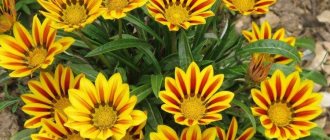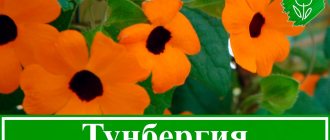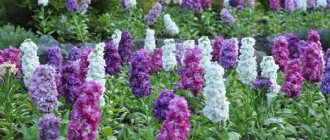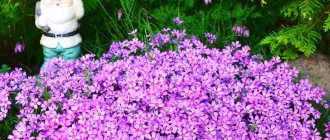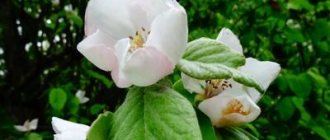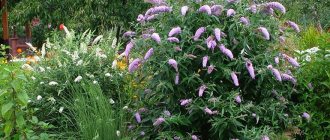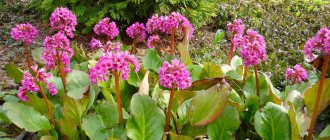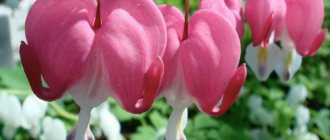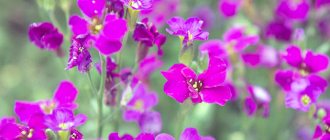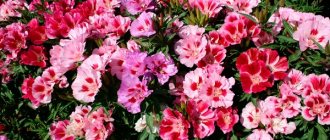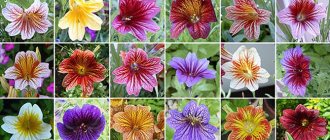Previously known to everyone exclusively as a wildflower, cornflower subsequently took on a cultivated form and settled in many flower beds as an ornamental plant. And its various varieties today boast more than just shades of blue.
Garden cornflowers have one difference visible to the naked eye from meadow plants of this species: they are decorative and are distinguished by larger flowers. And most importantly: the rich blue shade of the buds, which is familiar to us, has been replaced by a variety of colors of cultivated species and varieties. By the way, among the inhabitants of flower beds there are also cornflowers, which are radically different from the original even in the appearance of the flowers: they are denser and fluffier, and we will also tell you about them.
There are two versions of the origin of the word centaurea - the Latin name of the plant. One of them, mythological, claims that with the help of cornflower the centaur Chiron was healed from the poison of the Lernaean Hydra. Another says that this flower was called that way even under Hippocrates, and translated from Greek its name literally sounds like “stabbing bulls.”
general information
Cornflowers are found throughout Europe, decorating lawns and flower beds in gardens and cities. They also grow in the wild, where our distant ancestors noticed it and began to use it as a medicinal plant.
The bright flowers of cornflower are large inflorescences-baskets of individual small flowers that look like petals. In addition to blue and dark blue varieties, there are white, pink, yellow and burgundy varieties.
Cornflower is a herbaceous plant, but it is not always small, because some species can grow over a meter. Among them there are annuals and perennials, and in natural conditions they grow almost like weeds.
Basically, the stems of cornflowers are erect or recumbent, and the leaves can be whole or heavily dissected. The inflorescences are collected in several pieces, due to which wonderful bouquets are obtained from cornflowers. Otherwise, it is quite problematic to derive a single general description due to the diversity of the genus.
Photo: phonoteka.org
Medicinal properties
The plant is used in folk medicine and pharmaceuticals. Cornflower flowers contain large amounts of:
- mineral salts;
- vitamins;
- tannins;
- alkaloids;
- glycosides;
- flavonoids.
The procurement of raw materials is carried out during the flowering period. Only fresh, unwilted inflorescences are used. They are thoroughly dried in a dark, ventilated place and stored in an airtight container.
Water and alcohol infusions, decoctions or teas are prepared from the resulting raw materials. The drugs have diaphoretic, antipyretic, diuretic, antimicrobial, choleretic, laxative, analgesic, and antispasmodic effects on the body.
Cornflower is taken orally for gastrointestinal upset, cough, nervous tension, menstrual irregularities and heavy bleeding. When used externally, the condition of the skin and hair improves, irritation goes away and wounds heal.
Since the plant contains cyanide, which can accumulate in the body, taking cornflower preparations should be started after consulting a doctor. Treatment is completely contraindicated for pregnant women, people with allergies, and children under 12 years of age.
Types of cornflowers
In Russia alone there are about 180 species that belong to the genus of cornflowers. In fact, there are many more, but we'll start with the main ones!
Blue cornflower
The most popular and widespread in our latitudes. It is grown as an annual, and less often as a biennial plant. Erect stems, silvery leaves and single basket-shaped inflorescences are blue cornflower.
Photo: 2sotki.ru
Pink cornflower
And again the name speaks for itself, so its peculiarity is single pink inflorescences about 5 cm in diameter. The leaves and shoots of pink cornflowers are slightly lighter.
Photo: flo.discus-club.ru
Field cornflower
An herbaceous annual with delicate blue-blue heads that bloom in late spring. It is often planted in flower beds in group compositions.
Photo: youtube.com
Meadow cornflower
A perennial herbaceous species with stiff, straight, tall stems. The inflorescences of such cornflowers are usually white or pinkish, and the leaves and shoots seem to be covered with a silvery coating.
Photo: etnomagazin.ru
Large-headed cornflower
One of the tallest species, up to 120 cm in height and with large yellow inflorescences up to 7 cm in diameter. Large-headed cornflower blooms by mid-summer.
Photo: dachnaya-zhizn.ru
White cornflower
It is distinguished not only by its white color, but also by its voluminous double inflorescences, approximately 4 cm in diameter. But this species is listed in the Red Book throughout Europe.
Photo: sady-msk.ru
Levkoy (50 photos): types, care and planting in open ground
Use of colors
Now you know exactly how to grow cornflowers, what you need to feed these wonderful flowers and how to propagate them around the site, but there are still some interesting facts that we would like to share with you. It turns out that plant materials from the flower are often used in medicine. We will not describe in detail each recipe and methods of use, but simply mention that the flower is quite successfully used in gynecology, eye diseases, skin diseases, cuts and fractures, cosmetology, colds, and so on. In addition, cornflowers can also be used to increase a person’s appetite by giving him a pleasant herbal decoction.
Caring for cornflowers
If you choose the right area for cornflowers, even an inexperienced beginner can easily handle the care. Despite all its visual fragility, the plant causes almost no trouble!
Temperature and lighting
Cornflowers are heat-loving, so they need a warm and bright area without drafts. It is important that they do not shade themselves, so when planting, leave 15-50 cm between the bushes, depending on the size of the variety.
Photo: 2sotki.ru
Watering
Cornflowers do not tolerate stagnation of water in the soil very well, so you should not flood them. They will grow poorly in areas with close groundwater. Additional moderate watering is needed only in the absence of rain for a long time.
Photo: zen.yandex.ru
The soil
The ideal soil for cornflowers is light loam. You also need to get rid of excessive acidity, so add lime to the soil as needed in the fall. Sawdust or sand are suitable as a baking powder.
Photo: oir.mobi
Fertilizers and fertilizing
Cornflowers need fertilizing mainly to extend the flowering period, so pay attention to potassium-phosphorus mixtures. It is enough to use complex preparations once every 2-3 weeks when watering.
Photo: cvetyportal.ru
Trimming
Cornflowers grow strongly and actively reproduce by self-sowing, so the plantings need to be thinned and trimmed periodically. There are two types of pruning - low and high. When low, no more than 10 cm of shoots remain, and in the end this has a great effect on the aesthetics of the flower bed. When tall, the stems are shortened just before the inflorescences, and this method is better for beginners.
Photo: flosium.ru
Wintering
Perennial varieties easily overwinter in open ground in the middle zone and even further north. Most of them do not require shelter and do not cause problems at all. It is enough to trim the bushes short before winter.
Photo: oir.mobi
Loosestrife (50 photos): types, planting and care in open ground
Planting and propagation
Cornflowers in their natural environment reproduce well by self-sowing. But for a decorative flower bed, the seedling method is better suited. By the end of March, plant the seeds in moist soil, lightly sprinkle with soil and leave warm under film until germination.
After sprouting, remove the film and move the containers to the light. When 2 leaves appear, thin the seedlings, leave the strongest ones, and pinch the rest at ground level. They can be transplanted into the garden when they grow to 10 cm.
Seeds can be sown immediately in open ground, but not earlier than the beginning of May, when the threat of frost has passed. Shoots will appear in a couple of weeks. And perennial varieties can be planted with seeds before winter, when the ground is already a little frozen.
At the end of summer, cornflowers can be propagated by dividing the bush. The mother plant must be carefully dug up, washed, cut off all excess shoots and separate the healthy part with at least three buds. After this, the cornflowers need to be planted, trimmed to 10 cm and watered regularly.
Photo: ugra-news.ru
Pests and diseases of cornflowers
Cornflowers rarely get sick and are almost not afraid of pests. They have only two main problems - fungus and mites. The most common fungal disease is fusarium, which quickly deteriorates the leaves. It is necessary to remove all affected areas, disinfect the cuts and treat the planting with fungicides.
Spider mites multiply intensively in hot and dry weather. The leaves turn yellow, and the plants are completely covered with a whitish coating called cobwebs. Special insecticides or spraying with an ordinary soap solution help against ticks.
Photo: oir.mobi
Daisies (50 photos): types, planting and care in open ground
Plant root system
The root system of Russian cornflower (pictured) has the appearance of a deep rod
Based on the nature of the root system of cornflowers, the following types are distinguished:
- long and branching roots (for example, soft cornflower);
- root shoots, which are formed due to many shoots (for example, in Fisher's cornflower);
- short roots, but highly branched (in mountain cornflower);
- deep-rooted, rod-shaped (for example, Russian cornflower);
- thick, powerful roots (in large-headed cornflower).
Cornflower seeds are ovoid in shape, in most cases pubescent on top, and have a tuft. Seed germination lasts about 3 years. Approximately 250-300 pieces of seeds weigh 1 g.
Cornflowers – photo
Just look how spectacular and bright simple and unassuming cornflowers can be!
Photo: zelensad.com
Photo: cvetyportal.ru
Photo: 2sotki.ru
Photo: oir.mobi
Photo: 2sotki.ru
Photo: poleznii-site.ru
Photo: otvet.mail.ru
Photo: fotokto.ru
Photo: 2sotki.ru
Photo: ola-la77.blogspot.com
Photo: pxhere.com
Photo: pixabay.com
Photo: commons.m.wikimedia.org
Photo: all-begonias-tamaravn.blogspot.com
Photo: pixnio.com
Photo: fotoload.ru
Photo: blog-o-cvetax.blogspot.com
Photo: filens.info
Photo: 7dach.ru
Photo: pixabay.com
Photo: forum.stitch.su
Photo: dachnaya-zhizn.ru
Photo: pixabay.com
Photo: mobilemusic.ru
Photo: 2sotki.ru
Photo: florantino.ru
Did you like the post? Subscribe to our channel in Yandex.Zen, it really helps us in our development!
